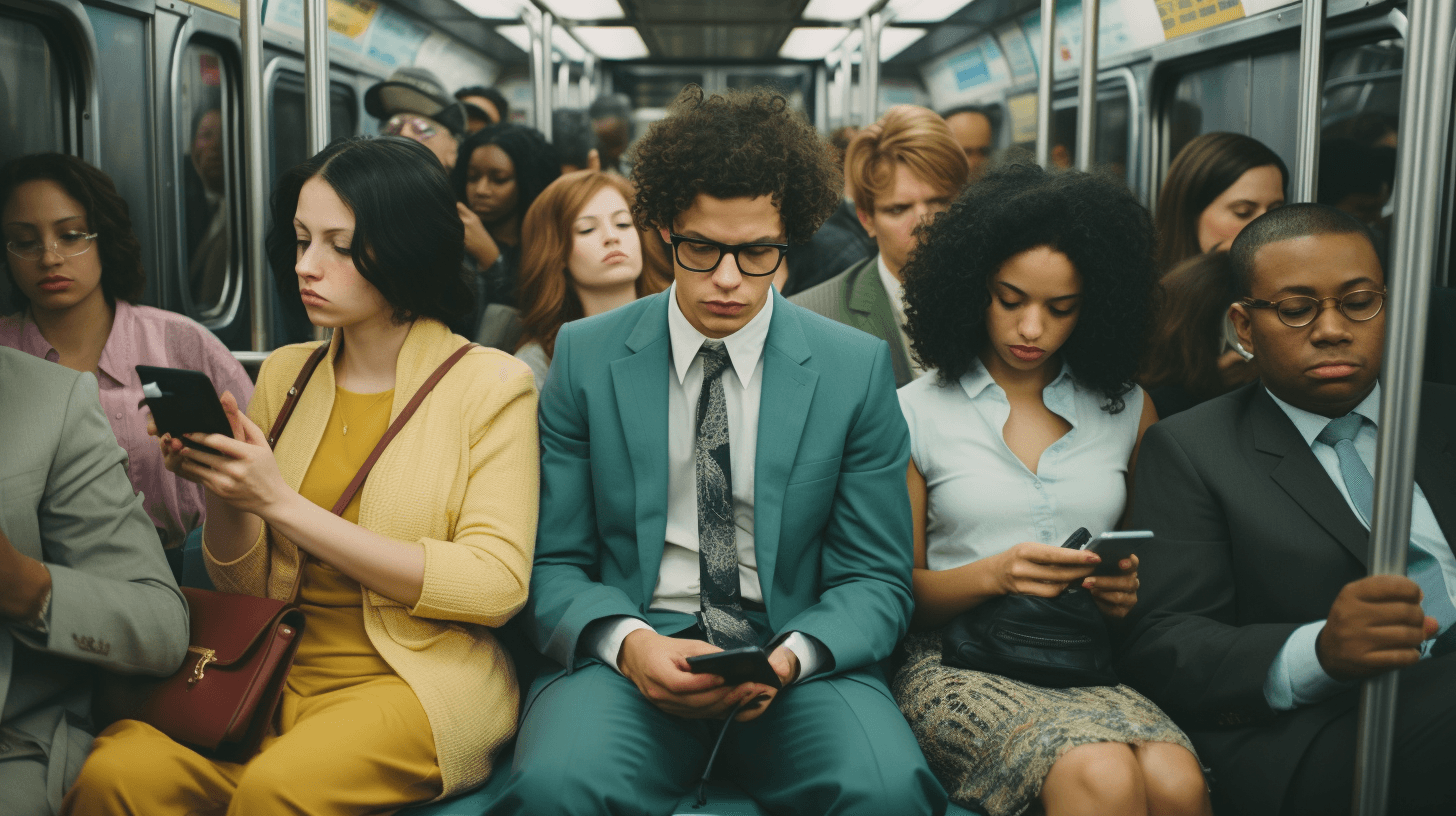Updated November 13, 2023

Adam Damko, CFA
The Piggy Bank
THE MARKETS
📈 Markets mellow, then surge - a week of ups & downs ends on a high note.
💼Economic News
Fed’s Stance: Federal Reserve Chair Jerome Powell emphasized the central bank’s commitment to align policy with a 2% inflation goal but expressed a lack of confidence in having reached it. In September, the US inflation rate remained steady at 3.7%.
Mortgage Rates: During the week of November 9th, Freddie Mac’s average 30-year fixed-rate mortgage fell to 7.5%, marking the most significant decrease in over a year, compared to the 7.76% rate of the previous week.
👀 What to Be on the Lookout for This Week
Keep an eye out for these economic reports:
Monday: Consumer inflation expectations
Tuesday: Consumer Price Index
Wednesday: Producer Price Index, Retail sales data
Thursday: Jobless claims, NAHB housing market index
Friday: Building permits, housing starts
Here are the major companies reporting earnings this week:
Monday: Tyson Foods, Monday.com
Tuesday: Home Depot, Tencent Music
Wednesday: Target, TJX Companies, Cisco
Thursday: Alibaba, Bath & Body Works, Macy’s, Gap, Walmart
Friday: BJ’s Wholesale
📰 In Other News
OpenAI Unveils GPT-4 Turbo: Despite being the frontrunner in the AI arms race, OpenAI is showing no signs of slowing down. In fact, it’s about to get turbocharged. The owner of ChatGPT just announced GPT-4 Turbo, with key features like the option to create customized ChatGPT-powered bots, preset voices, and a more powerful AI engine.
Over 92% of Fortune 500 companies are already utilizing ChatGPT, and the AI model has found applications across various industries like finance, law, and education. Although it now faces pressure from other AI-tech giants like Google, Meta Platforms, Anthropic, and X’s own Elon Musk, OpenAI remains committed to maintaining its competitive edge.
Continuing in the realm of AI, Microsoft and Meta have recently rolled out policies around generative AI and election advertising. Here’s how each company is regulating AI advertising on their platforms:
Meta: Advertisers will now be required to disclose the use of AI or face penalties.
Microsoft: A new tool will authenticate photos and videos of politicians, with a traceable digital watermark.
Google: As announced in September, companies will be required to disclose the use of AI.
Tax Tweaks: The IRS has officially adjusted the tax brackets for 2024. Here’s what you need to know:
Federal income tax brackets will be slightly higher to adjust for inflation.
The standard deduction is increasing to $29,200 for married couples filing together and $14,600 for single taxpayers.
The IRS also raised income thresholds for several other provisions, including alternative minimum tax, a parallel system for higher earners, and the estate tax exemption for wealthy families.
New Weight Loss Contender: Finally, the FDA just approved Eli Lilly’s diabetes drug, Zepbound, for use in weight loss therapy. The drug is reportedly cheaper to produce than Novo Nordisk’s two blockbuster drugs, Ozempic and Wegovy. This should increase competition in the weight loss industry as pharma companies battle for insurers and patients.
YOUR ECONOMY
🚗 Breaking Down the Modern-Day Commute
Average Commute Times
In 2006, the average one-way commute took 25 minutes, according to data from the Census Bureau. By 2019, this average had increased to 27.6 minutes.
In the post-pandemic economy, the rise of remote/hybrid work promised to eliminate the need to commute into the office. This has held true for many Americans. As of 2023, Forbes estimates that 28.2% of the population work a hybrid work schedule. However, a separate statistic estimates that roughly 50% of US workers are physically unable to work remotely and still need to commute to their workplace.
But, despite the number of people who now work remotely, the average daily commute still lasts around 27 minutes. What’s going on?
Unintended Side Effects
This surge in work flexibility has made it easier for many people to avoid the rush-hour commutes to and from the office. For remote workers, this flexibility offers dozens of benefits including regaining hours of their life from traffic each day, running errands at their leisure, and getting to spend more time with loved ones.
However, this spike in remote work has also led to unintended side effects. To begin with, ridership levels for many major modes of public transportation are down. For example, San Francisco's BART system reported a 40% drop in weekday ridership from pre-COVID levels. This lack of ridership has caused two issues:
More service disruptions: Declining ridership means less revenue for operators, making it more difficult to maintain a full complement of drivers, conductors, and maintenance workers. This can lead to more interruptions in service.
Less frequent schedules: With more people working remotely, rush hours have become less congested, while more people have started riding during the weekends. This has caused many public transportation operators to reduce their schedules. For example, trains that used to run every 10 minutes might now only run every 20 minutes.
For those who work remotely, these side effects have likely gone unnoticed. But for a significant portion of the population that relies on public transportation, these changes can be a major inconvenience, keeping the average commute length elevated.
Damaging Transportation Infrastructure
Many public transportation agencies are facing financial challenges due to a decrease in ridership. For instance, the Regional Transportation Authority, responsible for coordinating transportation services in the Chicago metro area, is projecting an annual budget shortfall of $730 million starting in 2024.
Unless new funding is allocated, these challenges are likely to worsen as federal COVID-era funding for transit systems runs out. In fact, declining ridership for public transportation is at risk of reaching a vicious cycle. As fewer riders use public transportation, operators could see a decline in revenue. This, in turn, might result in poorer service, negatively impacting ridership once again.
The good news is drivers may no longer have to contend with enraging rush-hour traffic. But unless public transportation is prioritized in budget discussions, the commuting gridlock hasn’t disappeared, just moved.

😶🌫️ Meet the “Hermit Consumer”
The Pandemic’s Lasting Impact on Consumers
In the grand scheme of things, the pandemic lockdowns were relatively short-lived, lasting just a year or two depending on where you lived in the world. The psychological impact these lockdowns had on consumers, however, is proving to be long-lasting.
Even though lockdowns have been over for years now, some economists have dubbed today’s consumers “hermits.” In other words, shoppers still show a strong preference for staying home.
Instead of venturing out to shop or dine, consumers around the world are more likely to spend money on goods that can be enjoyed in the comfort of their homes.
This shift is most apparent when considering the performance of different companies. For example, revenue for home improvement giant Home Depot is up 15% from 2019 levels. Meanwhile, Darden Restaurants, owner of popular chains such as Olive Garden and LongHorn Steakhouse, reports that foot traffic remains at just 80% of pre-pandemic levels. Similar trends can be seen across multiple different industries.
Experts estimate that this trend has shifted $600 billion per year out of the service economy and redirected it towards goods/services that can be used in the home.
Shrinking Supply
At first glance, the notion that people are spending less on "out of home" experiences might appear paradoxical. Taylor Swift's concerts are consistently sold out, movie theaters are breaking ticket records, and restaurants are seemingly bustling.
However, this could be a matter of limited supply rather than excessive demand. Employment levels across service industries have dropped compared to 2019. As a result, long lines could give off the illusion that many restaurants are bustling when in reality, they’re just understaffed.
The same goes for sellouts and high hotel rates. The pandemic disruption delayed the openings of many hotels in 2020 and 2021, reducing the supply of hotel rooms. With many hotels booked at capacity, it appears that everyone is traveling. But, in reality, the services industry may simply be overextended in accommodating what travelers there are.
What’s Driving This Trend?
Experts are attributing the persistent consumer preference to stay home to two main things:
Work patterns: Despite return-to-work mandates, roughly 30% of Americans still work a hybrid schedule, significantly higher than pre-pandemic levels. Since more time is spent at home, people naturally spend less on things like work clothes, lunches, or commuting to the office. Consequently, they spend more on home office furniture, renovation supplies, and comfy clothes.
Rediscovering values: The pandemic forced people to slow down for a moment and ask the question: What would I do if I had more free time? For many people, the answer was to take up a hobby like gardening, adopting a pet, or cooking at home. Even though the lockdowns are over, these rediscovered behavioral changes appear to have stuck.
Only time will tell if this change is truly permanent. On one hand, people might truly be more comfortable spending more time at home. Still, there’s always a chance that this trend will fade over time and within a few years, the “hermit consumer” will be back out and about.
POCKET CHANGE
79% of college students said they don’t use dating apps even once a month. Instead, the overwhelming majority of students living on campuses prefer to meet potential partners in person.
Iowa, Minnesota, Maine, West Virginia, and Michigan have the highest rates of millennial homeownership. Conversely, Hawaii, California, New York, Nevada, and Rhode Island are the states where millennials are least likely to own a home.
Store prices for 10-to-15-lb turkeys were down 13% annually in October, thanks to an oversupply of birds. Paying less for turkeys could help offset the cost of Thanksgiving dinner for many Americans.
Income inequality is worsening in America, despite rising wages. From 2019 to 2022, the top 10% of wage earners saw their income increase by 22% compared to just 5% for middle-income earners.
The solution to America’s housing crisis might be found in abandoned strip malls. Converting just 10% of dead strip malls across America could create approximately 700,000 new homes — boosting supply and ideally lowering prices.
Head to the app store and download Allio today to start building wealth your way!
Related Articles
The articles and customer support materials available on this property by Allio are educational only and not investment or tax advice.
If not otherwise specified above, this page contains original content by Allio Advisors LLC. This content is for general informational purposes only.
The information provided should be used at your own risk.
The original content provided here by Allio should not be construed as personal financial planning, tax, or financial advice. Whether an article, FAQ, customer support collateral, or interactive calculator, all original content by Allio is only for general informational purposes.
While we do our utmost to present fair, accurate reporting and analysis, Allio offers no warranties about the accuracy or completeness of the information contained in the published articles. Please pay attention to the original publication date and last updated date of each article. Allio offers no guarantee that it will update its articles after the date they were posted with subsequent developments of any kind, including, but not limited to, any subsequent changes in the relevant laws and regulations.
Any links provided to other websites are offered as a matter of convenience and are not intended to imply that Allio or its writers endorse, sponsor, promote, and/or are affiliated with the owners of or participants in those sites, or endorses any information contained on those sites, unless expressly stated otherwise.
Allio may publish content that has been created by affiliated or unaffiliated contributors, who may include employees, other financial advisors, third-party authors who are paid a fee by Allio, or other parties. Unless otherwise noted, the content of such posts does not necessarily represent the actual views or opinions of Allio or any of its officers, directors, or employees. The opinions expressed by guest writers and/or article sources/interviewees are strictly their own and do not necessarily represent those of Allio.
For content involving investments or securities, you should know that investing in securities involves risks, and there is always the potential of losing money when you invest in securities. Before investing, consider your investment objectives and Allio's charges and expenses. Past performance does not guarantee future results, and the likelihood of investment outcomes are hypothetical in nature. This page is not an offer, solicitation of an offer, or advice to buy or sell securities in jurisdictions where Allio Advisors is not registered.
For content related to taxes, you should know that you should not rely on the information as tax advice. Articles or FAQs do not constitute a tax opinion and are not intended or written to be used, nor can they be used, by any taxpayer for the purpose of avoiding penalties that may be imposed on the taxpayer.


